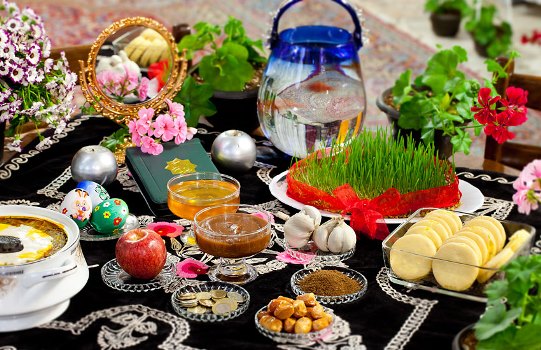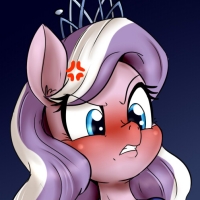![]() Publicado en Iran - Entretenimiento y Ocio - 21 Mar 2019 05:00 - 6
Publicado en Iran - Entretenimiento y Ocio - 21 Mar 2019 05:00 - 6
The first day of Iranian New Year (Nowruz ) is on March 21, 2019 – Nowruz is all about saying goodbye to Winter and o to Spring!
Nowruz is a rite dating back to at least the 6th century BCE, marking the new year and ushering in spring. Variously known as Novruz, Nowrouz, Nooruz, Navruz, Nauroz or Nevruz, this historic rite is observed on 21 March in many countries along the Silk Roads, including Afghanistan, Azerbaijan, India, Iran, Iraq, Kyrgyzstan, Kazakhstan, Pakistan, Tajikistan, Turkey, Turkmenistan and Uzbekistan.
Nowruz is celebrated by peoples of many different religions and cultures across this vast region. Some of the festival's earliest origins lie in Zoroastrianism, marking one of the holiest days in the ancient Zoroastrian calendar. The return of the spring was seen to have great spiritual significance, symbolising the triumph of good over evil and joy over sorrow. In particular, the Spirit of Noon, known as Rapithwina, who was considered to be driven underground by the Spirit of Winter during the cold months, was welcomed back with celebrations at noon on the day of Nowruz according to Zoroastrian tradition.

On the day of Nowruz, there is much feasting, visiting family members and friends, and exchanging gifts. A wide range of cultural performances and traditions also take place. Children are often given small toys, and traditionally play with colourfully painted eggs. Families and within communities share a symbolic meal, often consisting of cooked rice and vegetables combined with many local ingredients. In Kyrgyzstan, this meal is a public ceremony, with designated areas set aside in towns for the preparation of Nooruz Kedje or Chon Kedje , a type of soup made from bull's meat.
One widespread tradition is the preparation of a Nowruz table, on which a number of symbolic objects are placed. While these tables differ slightly from region to region, the most common features are: water, candles, dishes of green sprouts (or Sabzeh), a traditional dish made out of crushed wheat sprouts, mirrors, eggs, and various fruits. These objects symbolise purity, brightness, abundance, happiness and fertility for the new year. In Iran, the table is referred to as the “Sofreh-ye Haft Sin”, and displays seven objects, each starting with the letter ‘S'. A similar table is set in areas of India.
In recognition of the importance of this ancient rite, Nowruz was inscribed on UNESCO’s Representative List of the Intangible Cultural Heritage of Humanity in 2009. Moreover, in 2010, the United Nations General Assembly proclaimed 21 March International Nowruz Day.

It all begins in early March with ‘spring cleaning’. This tradition known as ‘Khaneh Tekani,’ literary meaning ‘shaking the house,’ is common in almost every household. Carpets are washed, windows are wiped, silverware is polished, curtains are taken to the dry cleaners and old furniture is repaired or replaced with a new one.
Every nook and cranny is scrubbed and polished until the whole house is sparkling clean. All family members are involved in this ritual, a ritual that signifies a fresh start to the year. It is widely believed that with all the dust and grime, ill fortune is also washed away and the slate is wiped clean again.
And then it’s shopping time. During the weeks left to the New Calendar Year, people head for the markets and shopping centers to buy an ortment of goods. And what’s on the list? New clothes, new shoes, fresh fruits, sweets and confectionaries, nuts, flowers and everything that goes on the Haft Seen Table. This special spread is a ‘must’ on the New Year and local markets are packed with enthusiastic shoppers who are looking for those special offers and last minute bargains.
Local flower markets are the busiest during the final days of the year. They’re filled with fresh cut flowers, beautiful potted plants and vendors beckoning you to buy. As you baby step your way through the crowd, you can’t help but enjoy all that enthusiasm and vigor in the air! The hyacinth is probably the most sought after flower here as it stands for prosperity and happiness in the Persian culture.

The holidays culminate in a special festival called ‘Sizdah Bedar’. This national event falls on the 13th and the last day of the holidays and it is when everyone goes out to spend time in nature. This is all done to get rid of the so-called ‘curse’ of number 13. On this day, people set off for the countryside or the parks to set up tents and have picnics.
Children play football, badminton and Ping-Pong, fly kites and enjoy a game of Frisbee while the elders prepare lunch. Making kebabs is a tradition and men usually take the lead. They start preparing the charcoal grill while the ladies thread the meat onto the skewers.
Nowruz is a rite dating back to at least the 6th century BCE, marking the new year and ushering in spring. Variously known as Novruz, Nowrouz, Nooruz, Navruz, Nauroz or Nevruz, this historic rite is observed on 21 March in many countries along the Silk Roads, including Afghanistan, Azerbaijan, India, Iran, Iraq, Kyrgyzstan, Kazakhstan, Pakistan, Tajikistan, Turkey, Turkmenistan and Uzbekistan.
Nowruz is celebrated by peoples of many different religions and cultures across this vast region. Some of the festival's earliest origins lie in Zoroastrianism, marking one of the holiest days in the ancient Zoroastrian calendar. The return of the spring was seen to have great spiritual significance, symbolising the triumph of good over evil and joy over sorrow. In particular, the Spirit of Noon, known as Rapithwina, who was considered to be driven underground by the Spirit of Winter during the cold months, was welcomed back with celebrations at noon on the day of Nowruz according to Zoroastrian tradition.

On the day of Nowruz, there is much feasting, visiting family members and friends, and exchanging gifts. A wide range of cultural performances and traditions also take place. Children are often given small toys, and traditionally play with colourfully painted eggs. Families and within communities share a symbolic meal, often consisting of cooked rice and vegetables combined with many local ingredients. In Kyrgyzstan, this meal is a public ceremony, with designated areas set aside in towns for the preparation of Nooruz Kedje or Chon Kedje , a type of soup made from bull's meat.
One widespread tradition is the preparation of a Nowruz table, on which a number of symbolic objects are placed. While these tables differ slightly from region to region, the most common features are: water, candles, dishes of green sprouts (or Sabzeh), a traditional dish made out of crushed wheat sprouts, mirrors, eggs, and various fruits. These objects symbolise purity, brightness, abundance, happiness and fertility for the new year. In Iran, the table is referred to as the “Sofreh-ye Haft Sin”, and displays seven objects, each starting with the letter ‘S'. A similar table is set in areas of India.
In recognition of the importance of this ancient rite, Nowruz was inscribed on UNESCO’s Representative List of the Intangible Cultural Heritage of Humanity in 2009. Moreover, in 2010, the United Nations General Assembly proclaimed 21 March International Nowruz Day.
KhanehTekani!
It all begins in early March with ‘spring cleaning’. This tradition known as ‘Khaneh Tekani,’ literary meaning ‘shaking the house,’ is common in almost every household. Carpets are washed, windows are wiped, silverware is polished, curtains are taken to the dry cleaners and old furniture is repaired or replaced with a new one.
Every nook and cranny is scrubbed and polished until the whole house is sparkling clean. All family members are involved in this ritual, a ritual that signifies a fresh start to the year. It is widely believed that with all the dust and grime, ill fortune is also washed away and the slate is wiped clean again.
And then it’s shopping time. During the weeks left to the New Calendar Year, people head for the markets and shopping centers to buy an ortment of goods. And what’s on the list? New clothes, new shoes, fresh fruits, sweets and confectionaries, nuts, flowers and everything that goes on the Haft Seen Table. This special spread is a ‘must’ on the New Year and local markets are packed with enthusiastic shoppers who are looking for those special offers and last minute bargains.
Local flower markets are the busiest during the final days of the year. They’re filled with fresh cut flowers, beautiful potted plants and vendors beckoning you to buy. As you baby step your way through the crowd, you can’t help but enjoy all that enthusiasm and vigor in the air! The hyacinth is probably the most sought after flower here as it stands for prosperity and happiness in the Persian culture.

Sizdah Bedar: 13th Day of Nowruz
The holidays culminate in a special festival called ‘Sizdah Bedar’. This national event falls on the 13th and the last day of the holidays and it is when everyone goes out to spend time in nature. This is all done to get rid of the so-called ‘curse’ of number 13. On this day, people set off for the countryside or the parks to set up tents and have picnics.
Children play football, badminton and Ping-Pong, fly kites and enjoy a game of Frisbee while the elders prepare lunch. Making kebabs is a tradition and men usually take the lead. They start preparing the charcoal grill while the ladies thread the meat onto the skewers.
Endosar
Pony of DarknessziziziziziziziziziziziziziziziziIranian HackerComentarios (6)








